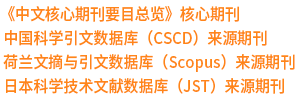


地震 ›› 1999, Vol. 19 ›› Issue (3): 223-229.
王海涛1), 彭克银2), 庄建仓2), 张永仙2), 尹祥础2)
Wang Haitao1), Peng Keyin2), Zhuang Jiancang2), Zhang Yongxian2), Yin Xiangchu2)
摘要: 基于随机 Posson 模型和Gutenberg-Richter 关系, 构造在10年尺度内样本量从300到5000的若干组模拟地震数据,计算分析各种样本条件下的加卸载响应比Y 时间进程变化。结果表明,计算样本的震级上限Mt 相对于logN-M 关系中拟合线性外推最大震级MT 的变化对Y的异常分布有一定影响,其影响随地震样本量从小到大而明显减小。当滑动计算时间窗内地震样本为几十个量级, Mt 取为MT -1.5(或至2. 0)时,随机出现Y 大于2.0的高值异常分布频度明显降低。而当地震样本量达到上百个以上量级, Mt 取为MT-0. 0(或0. 5)时, Y大于2.0的高异常值随机出现频度即极低。在实际地震资料的Y计算中若注意Mt 的选取后,其结果的稳定性和异常的可信度将得到显著提高。